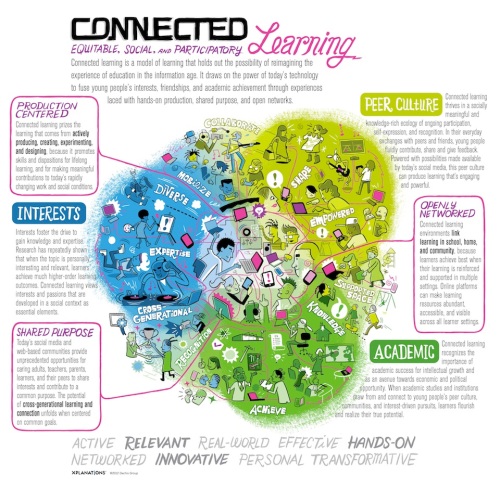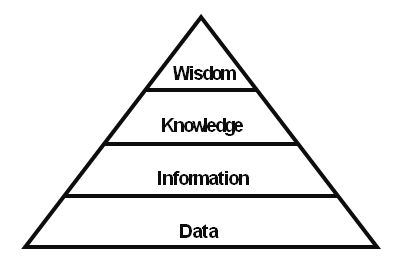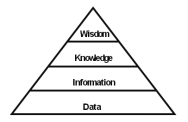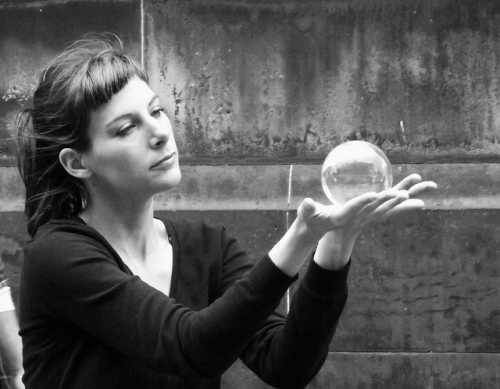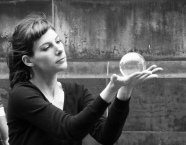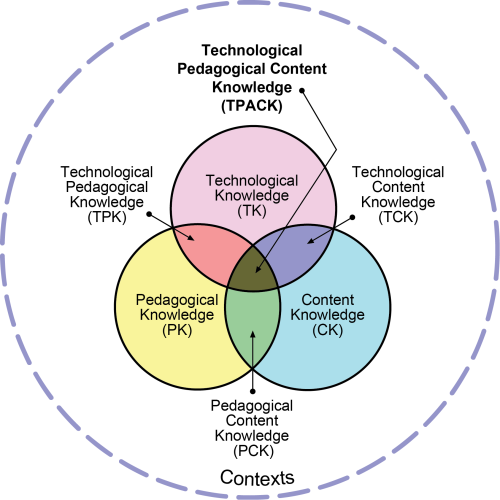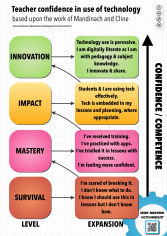How NGL can inform my role as teacher
“It is sobering to realize that more will change in the next 10 years than has changed in the last 10, and that as we move forward in times of accelerating technological change, we know less and less about the future.” (Goodyear, 2014)
It is becoming clear that the “structures and strictures” (Heppell, 2012 as cited in Ericsson, 2012) of our traditional schooling models may no longer be adequate or effective in equipping our children for what is increasingly looking like an uncertain future. “Every day is a surprise! Learning prepares you to cope with the surprises. Education prepares you to cope with certainty. There is no certainty!” (Heppell, 2012 as cited in Ericsson, 2012). Many suggest that we are on the edge of great change in education, even a revolution (Godin, 2012, Heppell, 2012, Koller, 2012 as cited in Ericsson, 2012). But many of the arguments in support of a need from change in our schools are not new. The need for improved pedagogical practices, for example, which focus on the needs of individual students, has been part of the dialogue of educational reform for at least the last 80 years as Alfred North Whitehead’s (1929) contends:
What education has to impart is an intimate sense for the power of ideas, for the beauty of ideas, and for the structure of ideas, together with a particular body of knowledge which has peculiar reference to life of the being possessing it.
As the cycles of debate continue, our schools remain largely unchanged (Mitra, 2013). Educational change is a slow process, so if we are sitting on the precipice of a ‘revolution’ as is suggested, what makes this ‘call to arms’ different from all those that have gone before? The answer would appear simple, given that the world around education has changed so dramatically and with such speed. To do nothing would see schools fail in their primary directive to prepare students to be active and productive members of their society. The way we communicate and our relationship with information have fundamentally changed with developing technologies. While some would argue that the ‘revolution’ is not about technology (November, 2014), it is conceivable to suggest that it may be the leverage needed to finally bring about change. A long overdue rethink about what it means to be ‘educated’ in the 21st century.
In looking forward to how Networked and Global Learning (NGL) will inform my practice as an educator, I find myself also standing on this precipice. I have strength in my resolve to know my students and place them at the centre of their learning. Knowing, as a teacher, the importance of structuring and designing a learning environment that, not only provide the opportunity for individualisation and specialisation, but will also support and equip my students with the necessary skills to navigate a more connected and global world. Yet, the reality of the “structures and strictures” (Heppell, 2012 as cited in Ericsson, 2012), of most schools within our system of education, presents a challenge that sees individual vision and innovation at the coalface of teaching and learning often difficult to action. I do, however, choose to remain optimistic!
Who owns the learning?
According to Don Tapscott (2008) today’s learners:
prize freedom and freedom of choice. They want to customize things, make them their own. They’re natural collaborators, who enjoy a conversation, not a lecture. They’ll scrutinize you and your organization. They insist on integrity. They want to have fun, even at work and at school. Speed is normal. Innovation is part of life. (Tapscott, 2008)
It would seem that today’s schools seem largely at odds with the expectations of their clientele. Is it little wonder that there has been a sharp rise in behavioural diagnosis (Rock, 2013) and retention rates (Do Something.org, n.d.) in countries such as the United States where: “The urgent need to reimagine education grows clearer by the day. Research has shown that too many students are disengaged and alienated from school, and see little or no purpose to their education” (Jenkins, 2012). Might not we soon follow suit, given our country’s desire to look to the United States as a blueprint for educational reform (Patty, 2011)? Which raises yet another question; who owns the learning (November 2014) – our governments, our schools, our teachers or our students? Perhaps the question to be asked is who SHOULD own the learning.
“This is the first generation of people that work, play, think and learn differently than their parents…They are the first generation to not be afraid of technology. It’s like the air to them.” (Tapscott, n.d., as cited in Ericsson, 2012)
The term ‘digital native’ is often used to describe today’s young people. These children, who in their lifetime, have always known mobile phone technology, computers, the internet and pay television and are comfortable with the rapid change pace of these technologies It is any wonder that they look like they know what they are doing. However, as Alan November (2014), suggests, that while the perception of these children’s ability to us is one of understanding, “when it comes to critical thinking, they really don’t know what’s going on [and] I think our student need us more than ever!” This statement rings true to my own experiences working within middle years’ students. There appears to be, what Dr Tony O’Driscoll (2009b) calls, a “Knowing-Doing Gap”. Knowing how to use technology but lacking the depth of understanding and skills needed to effectively apply this ability in a range of learning situations. They may know how to access information, but is that information credible? Do they know what to do with what they have discovered? To bridge this gap between ‘Knowing and Doing’, perhaps as teachers we need to focus less the actual technology and more on how to harness student engagement with technology within the fabric of teaching and learning process.
“Being taught and learning how to learn are not the same thing. Learning how to learn is going out into the world and finding your own problems and trying to figure out how to apply knowledge” (November, 2012). This quote from Alan November is not a revolutionary idea, with similar sentiments being expressed by Alfred North Whitehead back in 1929: “Education is the acquisition of the art of the utilisation of knowledge.” In considering the implication for pedagogical practice, the answer lies in a significant shift away from the teacher as the fountain of all knowledge and source of all answer to one of facilitation and guidance instruction, helping “to point young minds towards the right kind of questions” (Sugata Mitra, 2013, as cited in Ericsson, 2013). For learning to be deep and meaningful these question must be directed towards the pursuit of a solution or answer, after all “[t]here is no royal road to learning through an airy path of brilliant generalisations” (Whitehead, 1929). In so doing, our role as teachers becomes less about content and more about context:
In the future we are going to move from being content creators to contextual engineers. Where we engineer teachable moments out of every turn and if we don’t do that we’ll be disintermediated by Google. We have to really start thinking about moving beyond content and into the context realm. (O’Driscoll, 2009a)
The question then becomes how as teachers of the revolution to we facilitate this shift? A shift away from the delivery of content and the passive consumption and regurgitation of information to a more student–learning centred model in which students can “experience the joy of discovery” (Whitehead, 1929). I believe the answer is three-fold. As teachers, it begins with purposefully developing and encouraging curiosity within our students. “Curiosity is the lifeblood of learning. It is the source. It is the motivation” (O’Driscoll, 2011). Second, it lies in providing opportunities and experiences through which student can feel empowered within their own learning.
The kinds of learning that children and youth value, the kind that is deeply motivating and tied in meaningful ways to their construction of their identity, recognising that the goal of education in the 21st century should be in allowing young people to discover and refine their own expertise as they follow their passions and inform their interests. (Jenkins, 2012)
Activities such as ‘Genius Hour’ and ‘Learning Menus’ which I have discussed previously in my blog might be a safe place for teachers to start experimenting with these ideas. Third, and importantly, recognising and celebrating individual difference. Through teachers acquiring a better insight into what makes our student tick, not only do the students become more self-aware, both of their strengths and weakness, but also we as teachers are better equipped with the data we need to tailor learning experiences that will promote and encourage personal growth and development. I believe that through increased personalisation, choice and engagement, we can begin to develop a passion for learning in our students and that can make all the difference in the world.
One of the revolutions we are going to see is where less and less of education is about conveying content, because that is going to be a commodity, and hopefully one that is available to everyone around the world. A lot more of what we think of as education is going to go back to its original roots of teaching. Where the instructor actually engages in dialogue with students and helps them to develop thinking skills, problem solving skills and passion for the discipline. (Koller, 2013 as cited in Ericsson, 2012)
A new model for connected learning?
Education is concerned with the act of becoming… learning assists individuals in coming to understand the world, to contemplate worthy and significant ideas and concepts…learning is the process of coming to understand the world broadly and from many perspectives in order to see one’s role in advancing the needs related to ethics and humanity. (Siemens, 2008)
To this point, little consideration has been given directly to the benefits Networked and Global Learning (NGL) can bring to both the teaching and learning experience. This is in part due to the fact that I believe it is important as educators to first understand the changing landscape of our profession. The second reason, as mentioned previously, is that I believe the education system, as it is in Australia at the moment, does not provide the flexibility for teacher or students to truly embrace with the philosophies of constructivism and connectivism that lie at the heart of NGL.
Traditional classrooms, weighed down by the burden of a prescribed curriculum, constrained by the limitations of age and ability grouping and with compulsory attendance, lack the defining characteristics of a cohesive community (Reil & Polin, 2004)
In short, the ‘revolution’ has not yet seen us reach a point where those in position of power and influence; politicians, educational boards, community leaders, school leadership teams, parents, and indeed many teachers, are ready to let go of the past and focus on creating a system for education that can lead us into future. BUT “[i]f the traditional methods are not bringing about the traditional results with these learners, better approaches must be considered” (Taylor,2010) must not they? Again citing O’Driscoll (2009b), “My reality is sometimes different to my vision.” Yet content delivery, standardised testing and comparison are our realities. As such, the challenge then becomes to look at ways in which we might be able to incorporate NGL experiences within our practice to begin to bridge the gap between the reality and the ideal!
Two models, which are of personal interest and I believe warrant further investigation as to how they might assist me as a teacher in developing a more NGL approach within my classroom, given current “structures and strictures” (Heppell, 2013), are the ‘Connected Learning’ approach and ‘TPACK Framework’ which I have discussed previously in my blog.
What appeals to me about the ‘Connected learning’ approach, created by the Macarthur Foundation (as cited in Jenkins, 2012 and Ito et al., 2013), is that is built upon three key values, and three separate learning and design principles.
Three values:
- Equity – when educational opportunity is available and accessible to all young people, it elevates the world we all live in.
- Full participation – learning environments, communities, and civic life thrive when all members actively engage and contribute.
- Social connection – learning is meaningful when it is part of valued social relationships and shared practice, culture, and identity.
Three learning principles:
- Interest-powered
- Peer supported
- Academically orientated
Three design principles:
- Shared purpose
- Production-centred
- Openly networked
While this model still clearly presents challenges in the face of the prescriptive and content driven nature of the Australia curriculum, particularly when it comes to developing learning opportunities that are ‘interest-powered’, it does provide an interesting prism through which to look critically at current pedagogical practices. “We recognize the importance of foundational skills and knowledge, but we also see the challenges of education as broader than meeting uniform content standards” (Ito et al., 2013). As such, I believe this model has some promise in terms of a more global and interconnected approach to education, though further investigation and research is needed.
The TPACK Framework (Koehler et al., 2013), while significantly different in focus and structure to the ‘Connected Learning’ approach in some respects, still looks to make informed decisions about learning based on identification of what I have termed the ‘optimal overlap’ of key influences. What I also find promising about this framework is that the technology does not drive the content or the pedagogy. It allows for decisions to be made based on best practice in all areas. Though not articulated directly in their values and principles, the ‘Connected Learning’ approach also highlights the importance of integrated technology. Therefore a merging of these two ideas may prove fruitful in the pursuit of a workable model for NGL.
A place to learn
As the landscape of education, hopefully, begins to adapt to reflect the changing needs of our society and children, it is also necessary to consider the structures within which learning occurs and whether these structures continue to best serve the learning needs of the teachers and student who must fit within them.
Space—whether physical or virtual—can have an impact on learning. It can bring people together; it can encourage exploration, collaboration, and discussion. Or, space can carry an unspoken message of silence and disconnectedness. More and more we see the power of built pedagogy (the ability of space to define how one teaches) in colleges and universities. (Oblinger, 2006 as cited in Siemens, 2008)
Though not included directly within this quotation, I believe its relevance can be extended to include traditional K-12 school settings. If we hope to develop a new culture within education, one that embraces curiosity, collaboration and communication and learning within communities (NGL), both face-to-face and digitally, should we not endeavour to provide physical spaces which support and encourage our students in this pursuit? If we know that physical structure impacts upon schools’ uptake of technology and new pedagogies (Siemens, 2008), when confronted which such evidence, are we not negligent in our inaction? Brave words, though perhaps again, inaction can be attributed to the fact that we continue to stand on the precipice of change, a revolution still-in-waiting. Or worse, holding the belief that “[a]nother reform movement has come and gone, reinforcing the conventional education wisdom that promises, “This too shall pass.” (DuFour, 2004). One thing is certain, however, if education is going to embrace change let it be brave and bold, for who knows when and if another chance will come.
“Every intellectual revolution which has ever stirred humanity into greatness has been a passionate protest against inert ideas” (Whitehead, 1929).
In conclusion, though people’s views as to the future of education may differ, this subject has opened my eyes to the possibilities that opening to enable me to meet the challenges of constructive and meaningful teaching in today’s society. When trudging away in the trenches, if can be difficult to find meaning in the decisions made by those in position of authority and power. Yet the future of education is something we all need to concern ourselves with. We need to adapt to a world that is becoming increasing interconnected and interdependent. A world where technology continues to accelerate and where our children cannot long rely on certainty. It is a brave frontier and as such requires bold steps in order to equip our children for life and to work and thrive in this changing global landscape. As The Learning Society (as cited in Cross et al., 2014) contend, because of the universal nature of this change, “every part of a society must invest in learning and participate.” “The future is connected and collaborative” (Cross et al., 2014).
I believe that much remains to be done but I am hopeful that revolution has indeed begun. Because if we, as educators, continue to nothing in the hope that the changes we see occurring around us—the wide expanse of technology use, the way we interact with information and communication with others—will just be another passing educational fad, we deny our student the opportunities to not only survive in a rapidly changing and evolving world, but also to thrive!
Education is not an end in itself. Education will continue to develop as the central element in preparing individuals and societies to participate in the information and knowledge age. The critical challenges facing humanity are many. A highly connected and well educated populace appears to hold the greatest prospect for meeting these challenges. (Siemens, 2008)
REFERENCES:
Cross, C., Hamilton, K., Plested, D. and Rezk, M. (2014). Connectivism. Retrieved August 5, 2014, from http://education-2020.wikispaces.com/Connectivism
DoSomething.org. (n.d.). 11 Facts about High School Dropout Rates. Retrieved September 16, 2014 from https://www.dosomething.org/facts/11-facts-about-high-school-dropout-rates
DuFour, R. (2004). Schools as Learning Communities. Educational Leadership, 61(8), 6-11.
Ericsson. (2012). The Future of Learning [Video post]. Video posted to http://www.youtube.com/watch?v=quYDkuD4dMU
Goodyear, P. (2014), Productive Learning Networks. The Evolution of Research and Practice. In Carvalho, L. & Goodyear, P. (Eds.), The Architecture of Productive Learning Networks. (pp. 23-47). New York: Routledge.
Ito, M., Gutiérrez, K., Livingstone, S., Penuel, B., Rhodes, J., Salen, K., Schor, J., Sefton-Green, J. and Watkins, S.C. (2013). Connected Learning: An Agenda for Research and Design. Digital Media and Learning Research Hub. Irvine, CA. Retrieved from www.dmlhub.net/publications
Jenkins, H. (2012, March 1). Connected Learning: Reimagining the Experience of Education in the Information Age [web log post]. Retrieved from http://henryjenkins.org/2012/03/connected_learning_a_new_parad.html
Koehler, M.J, Mishra, P., & Cain, W. (2013). What Is Technological Pedagogical Content Knowledge (TPACK)? Journal of Education 193 (3), 13-19. Retrieved from http://www.bu.edu/journalofeducation/files/2014/02/BUJoE.193.3.Koehleretal.pdf
Mitra, S. (2013). Build a School in the Cloud [Video post]. Video posted to https://www.ted.com/talks/sugata_mitra_build_a_school_in_the_cloud
November, A. (2012). Flip your thinking [Video post]. Video posted to http://www.youtube.com/watch?v=NRnex3ZuFo8
November, A. (2014). Who owns the learning? Preparing student for success in the Digital Age [Video post]. Video posted to http://www.youtube.com/watch?v=NOAIxIBeT90
O’Driscoll, T. (2009a). NetWORKed Learning – Part 1 [Video post]. Video posted to https://www.youtube.com/watch?v=VZlWC-ImN2E
O’Driscoll, T. (2009b). NetWORKed Learning – Part 2 [Video post]. Video posted to https://www.youtube.com/watch?v=-ewD2v2s6S4
O’Driscoll, T. (2011). Preparing our children for a world we can barely imagine [Video post]. Video posted to https://www.youtube.com/watch?v=HcdqEuZvCgw
Patty, A. (2011, May 2). Is Australia on the right path to education reform? The Sydney Morning Herald. Retrieved from http://www.smh.com.au/federal-politics/blogs/learning-curve/is-australia-on-the-right-path-to-education-reform-20110502-1e3oi.html
Riel, M., & Polin, L. (2004). Online learning communities: Common ground and critical differences in designing technical environments. In S. A. Barab, R. Kling, & J. Gray (Eds.), Designing for Virtual Communities in the Service of Learning (pp. 16–50). Cambridge: Cambridge University Press.
Rock, M. (2013, July 8). A Nation of Kids with Gadgets and ADHD: Is technology to blame for the rise of behavioural disorders [web log post]. Retrieved from http://techland.time.com/2013/07/08/a-nation-of-kids-with-gadgets-and-adhd/
Siemens, G. (2008). New structures and spaces of learning: The systemic impact of connective knowledge, connectivism, and networked learning. Actas Do Encontro Sobre Web (Vol. 2, pp.7-23). Retrieved August 31, 2014 from http://elearnspace.org/Articles/systemic_impact.htm
Tapscott, D. (2008). Grown Up Digital: How the Net Generation is Changing Your World. New York: Mcgraw-Hill
Taylor, M. (2010). Teaching Generation NeXt: A Pedagogy for Today’s Learners. A collection of Paper of Self-Study and Institutional Improvement, (26 ed.), pp.192-196. Chicago, IL: The Higher Learning Commission. Retrieved September 19, 2014 from http://www.taylorprograms.com/images/Teaching_Gen_NeXt.pdf
Whitehead, A.N. (1929). The Aims of Education. Retrieved September 15, 2014 from http://playpen.meraka.csir.co.za/~acdc/education/Dr_Anvind_Gupa/Learners_Library_7_March_2007/Resources/books/readings/24.pdf


